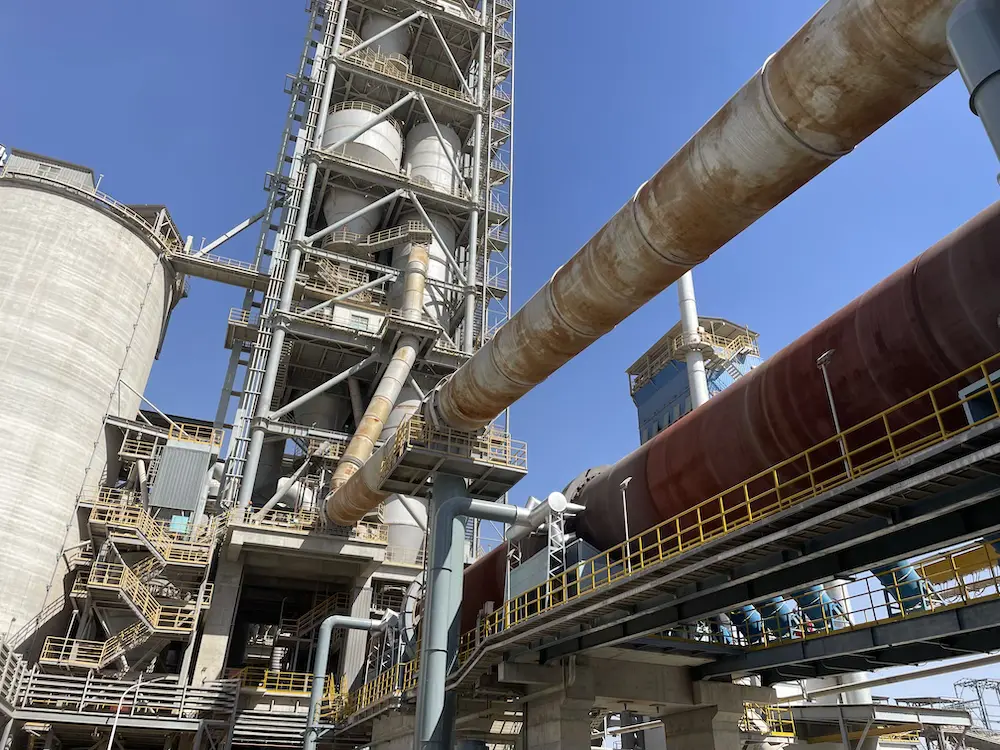
Pyroprocessing: the heating up of raw materials, such as limestone, to produce a new material, such as cement, is a process that has been used for millennia. Today, we have a good understanding of the chemical and physical principles at play along with sensor data about the production environment and information about the raw material input. And yet, the way that cement actually forms in the kiln is still close to a black box process which means that the production process is inefficient and subject to a lot of variation.
In fact, the day-to-day operational performance of a single cement plant can vary greatly with some literature indicating the difference between an average day and a good day could be as high as 20%.
This variation leads to significant differences in fuel consumption, carbon emissions, product quality and overall productivity, making it essential to explore optimisation techniques to increase the efficiency of cement pyroprocess.
What can pyroprocess optimisation achieve?
Energy Efficiency Improvements
A key benefit of pyroprocess optimisation is the reduction of fuel consumption through energy efficiency. By utilising alternative fuels, implementing heat recovery systems or deploying AI models to optimise pyroprocessing, cement producers can achieve energy efficiency improvements that lower fuel costs and reduce CO2 emissions.
Lower Carbon Footprint
The cement industry uses coal and other fossil fuels as its primary source of thermal energy. Pyroprocess optimisation significantly reduces fuel-derived carbon emissions by reducing fuel consumption. With the demand for sustainable cement products growing, cement producers can also achieve improved reputational capital by lowering their carbon footprint.
Improved Product Quality
Pyroprocess optimisation can also improve product quality by increasing kiln stability. Our solution an AI optimisation platform, has achieved a 25% reduction in clinker quality variation for our customers with regular minor adjustments of parameters, such as fan speeds, fuel flows, fuel rates, and material flow speeds, using the real-time conditions of the plant.
Increased Productivity
Optimised processes can enable higher production rates while maintaining product quality and reducing unplanned downtime due to equipment failures or maintenance needs.
Cost Reduction
Through efficient utilisation of resources and reduced fuel costs, companies can benefit from cost savings in their cement manufacturing operations. Energy requirements represent the largest variable cost for cement producers, accounting for around 35 – 40% of all short-run operational expenses, so optimising fuel use can provide a significant reduction in expenditure.
Pyroprocess optimisation with advanced process control systems and AI automation
There are a range of tools available to cement producers to optimise their pyroprocess from expert systems to predictive process controls and automation systems. These software solutions can all maintain operations within desired limits. But they lack the dynamic qualities that are vital to deal with changing plant parameters or improve performance beyond a narrow operating window.
By implementing AI optimisation solutions with real-time monitoring capabilities, manufacturers can achieve better control over critical variables such as temperature profiles, airflows, or fuel combustion rates.
Using predictive modelling algorithms based on machine learning techniques allows for precise adjustment of process parameters for optimal performance. This results in improved product quality while minimising energy waste and reducing operational risks.
Pyroprocess optimisation holds immense potential for enhancing cement production efficiency, reducing environmental impact, and improving product quality. Particularly through the adoption of AI-powered advanced process control solutions, cement manufacturers can achieve sustainable manufacturing practices while remaining competitive in the industry. By embracing these optimisation techniques, we can pave the way for a greener and more efficient future in cement production.
